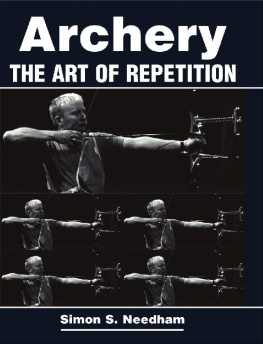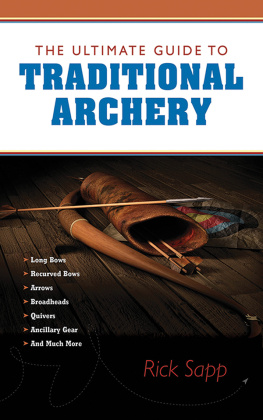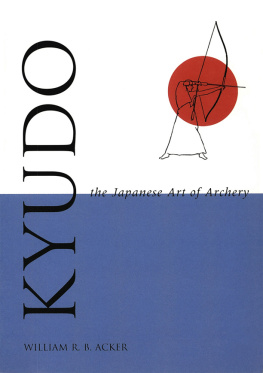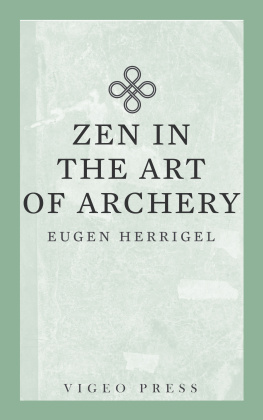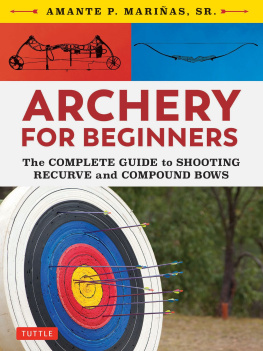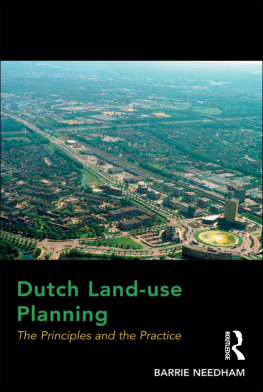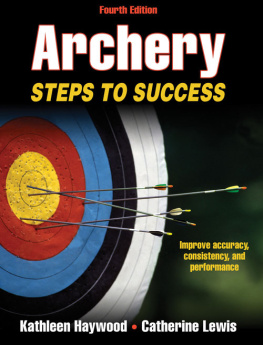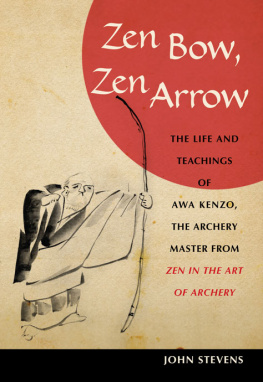Simon Needham - Archery: The Art of Repetition
Here you can read online Simon Needham - Archery: The Art of Repetition full text of the book (entire story) in english for free. Download pdf and epub, get meaning, cover and reviews about this ebook. genre: Home and family. Description of the work, (preface) as well as reviews are available. Best literature library LitArk.com created for fans of good reading and offers a wide selection of genres:
Romance novel
Science fiction
Adventure
Detective
Science
History
Home and family
Prose
Art
Politics
Computer
Non-fiction
Religion
Business
Children
Humor
Choose a favorite category and find really read worthwhile books. Enjoy immersion in the world of imagination, feel the emotions of the characters or learn something new for yourself, make an fascinating discovery.
- Book:Archery: The Art of Repetition
- Author:
- Genre:
- Rating:4 / 5
- Favourites:Add to favourites
- Your mark:
- 80
- 1
- 2
- 3
- 4
- 5
Archery: The Art of Repetition: summary, description and annotation
We offer to read an annotation, description, summary or preface (depends on what the author of the book "Archery: The Art of Repetition" wrote himself). If you haven't found the necessary information about the book — write in the comments, we will try to find it.
Archery: The Art of Repetition — read online for free the complete book (whole text) full work
Below is the text of the book, divided by pages. System saving the place of the last page read, allows you to conveniently read the book "Archery: The Art of Repetition" online for free, without having to search again every time where you left off. Put a bookmark, and you can go to the page where you finished reading at any time.
Font size:
Interval:
Bookmark:


First published in 2006 by The Crowood Press Ltd, Ramsbury, Marlborough, Wiltshire, SN8 2HR
www.crowood.com
This e-book edition first published in 2012
Simon S. Needham 2006
All rights reserved. This e-book is copyright material and must not be copied, reproduced, transferred, distributed, leased, licensed or publicly performed or used in any way except as specifically permitted in writing by the publishers, as allowed under the terms and conditions under which it was purchased or as strictly permitted by applicable copyright law. Any unauthorised distribution or use of this text may be a direct infringement of the authors and publishers rights, and those responsible may be liable in law accordingly.
ISBN 978 1 84797 465 5
Acknowledgements
In order to succeed at anything one needs to be determined and also to have the support of others. Reaching the Olympics in Sydney 2000 necessitated a huge personal effort but it also required the support and encouragement of family members, friends and work colleagues. It should also be noted that when obstacles emerged this only hardened my resolve to succeed.
So that the knowledge acquired while reaching for the top in archery should not be lost, I was encouraged to write it down. This again required the support of family and friends, but with their help I was able to bring all the information together in a coherent, illustrated form so that others would be able to benefit from my experiences and succeed more easily in archery. Of all the people that have helped with this endeavour, I would especially like to thank: Karen Henderson and Bob Provan, who helped to edit my manuscript, made grammatical changes and provided advice on content; Barry Eley, Lana Needham and Andrew Calloway for contributing additional photographs; the British team archers for posing for photographs; Lana for putting up with photographs and drawings being strewn all over the living room floor; the many archers who illustrated their skills; and others too numerous to mention who helped in countless ways.
Unless otherwise credited, photographs are by the author.
Throughout this book, he, him and his are used as neutral pronouns and as such refer to both males and females.

The aim of this book is to provide a comprehensive guide for anyone interested in archery, whether they are new to the sport, have shot a little, or are of a reasonable standard. Whatever your skill level, this volume will be an invaluable aid to improving both your shooting and your understanding of archery.
I wish that, twenty years ago when I began my archery career, I had known what I know now. I have therefore aimed to put all of my accumulated knowledge into this volume, so as to provide a bank of ideas and knowledge upon which archers of all levels and abilities can draw. If you are a newcomer , starting your archery career with a good method will mean that your progression through the sport will be much easier.
Archery, like many other experiences in life, is easier to learn if it is broken down into the various parts which make the whole, such as style, equipment , fitness, psychology, tuning and so on. However , once compartmentalized for ease of reference, these parts should such not remain separated, or even, perhaps as in the case of fitness, ignored. You must always remember that ultimately each of the component parts is integral to the whole. While you may get by in your shooting by ignoring some parts of the whole, inevitably this will hold you back from attaining your true potential.
Reaching your potential in archery is like completing a personal jigsaw; each of us will have our own jigsaw of excellence. The key to success is in finding all the individual pieces to it. All archers have the same ultimate focal point the centre of the picture. It is the differences in body build and make-up of the neural pathways, in the main, that will determine the pieces that form your own personal archery jigsaw.
The simplest way of explaining archery is that you need to be able to carry out the same actions and thoughts repeatedly, to hit the centre of the target every time the art of repetition. In theory , you can hold the bow however you want, stand on one foot, stick your finger in your ear when you pull the string back, and if when you let go the arrow hits the middle of the target, you will score a ten. But the chances of being able to achieve a ten every time from this method are negligible. Ask yourself: Am I able to repeat the movement easily, and is there any way to make what I am doing easier to repeat time and time again? You need to consider that the body and mind work in a specific way. Biomechanics refers to how the body works mechanically and psychology to how the mind works utilizing these two underlying mechanisms is vital to your eventual success in archery.
This book will enable you to put together the main part of your jigsaw, quickly and easily. You will be able to shoot well from the very start. Archery should be a learning progression which begins the moment you first start shooting and which enables you to maximize your potential. The photographs here all show archers who have reached international level and have shot over a score of 1300 for a FITA (maximum 1440), or are international medal winners.

Glasgows shooting ground all ages practising together.
Chapter 1
Archery is a sport for all. Whether you are six or sixty-nine years old, are fully fit or have physical challenges, you can have a go at archery. I know of one-armed archers and even blind archers. They all shoot in the same competitions. The age at which you can take up archery varies between clubs. Due to the shorter attention span of younger children, some clubs may require the parents to stay and supervise their offspring, thus providing an opportunity for the whole family to participate in the activity.
Generally, archery is taken up in the first place as a hobby or recreational sport, with most people content to shoot at their local club and enjoy the social side of archery. Some people then get the bug and start entering local competitions , eventually moving on to national competitions. A few of the most determined may even reach the Olympics. However, archers of all ability levels need to be able to learn to focus on the control of their minds and bodies. Accordingly, many professional people find that archery is an excellent distraction from the rigours of a high-pressure working environment .
Inevitably, one of the first questions to be asked is: How much will it cost? How much will the initial outlay be and how much additional equipment will be required if the sport is taken to competition level?
All archery clubs run induction courses for beginners; these are usually one-hour sessions run over six weeks to allow for individual work routines. There will be a minimal payment (for example, my club, Links Archers, currently charges 15 for the induction course). During a beginners course all the equipment will be supplied free of charge and instruction is provided on safety and shooting technique. At the end of the course individuals then decide whether or not they wish to join the club. Those deciding to join will need to pay both the club and Grand National Archery Society (GNAS) fees. Although the safety rules are always strictly enforced, anyone shooting at a club has to be insured and this is included in the club fees.
Font size:
Interval:
Bookmark:
Similar books «Archery: The Art of Repetition»
Look at similar books to Archery: The Art of Repetition. We have selected literature similar in name and meaning in the hope of providing readers with more options to find new, interesting, not yet read works.
Discussion, reviews of the book Archery: The Art of Repetition and just readers' own opinions. Leave your comments, write what you think about the work, its meaning or the main characters. Specify what exactly you liked and what you didn't like, and why you think so.

